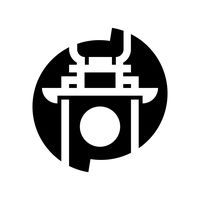Budapest: Korean Art in the 18-19th Century

The Hopp Ferenc East-Asia Museum of Art, Budapest, Hungary, has a temporary exhibition presenting the extremely exciting culture of Korea. Interiors, ceremonial clothing and ornamented objects represent Korean art.
Art in Korea was influenced by China and various neighbouring people. The last Korean dynasty, the Joseaon Dynasty ruled over the country for over five-hundred years (1392-1910). However, this period is divides Korean history: the early era was the 14-16th century, the second the 17-20th century. During these periods, independent Korean culture was in the focus, it was the beginning of dynastic historiography, and introduction of Korean letter characters. A culture of Korean literate officials formed, heralding the priority of painting, calligraphy and poetry. In the 18th century, portrait painting was highlighted, often portraying everyday life satirically. The most outstanding architectural achievement of the Joeson-era in the 17th century was the Gyeongbokgung Palace.
To learn more about this exhibition visit: The Country of the First Blush of Dawn - Korean Art in the 18-19th CenturyHungarian Travellers in Korea
Several Hungarian travellers visited Korea in the second half of the 19th century, most of them in search of the origins of Hungarians. Just a few name of those who visited Korea in the 19-20th century: Dr. the surgeon Ferenc Gáspár, the bishop Péter Gróf Vay, the founder of the Museum Ferenc Hopp, the linguist Benedek Barátosi Balogh, the surgeon for the Austro-Hungarian Monarchy dr. Dezső Bozóky.
Similar content
20 Jun 2019 - 30 Aug 2020
posted on
06 Sep 2010
posted on
01 Mar 2012
from - to
20 Jun 2019 - 30 Aug 2020
from - to
17 Feb 2012 - 27 May 2012
from - to
22 Jun 2013 - 22 Jun 2013


